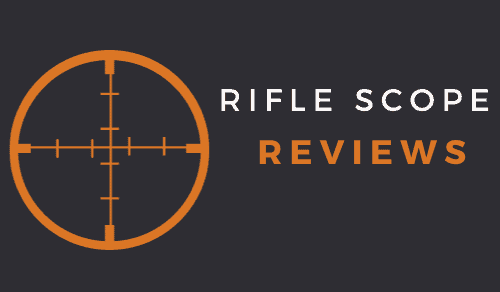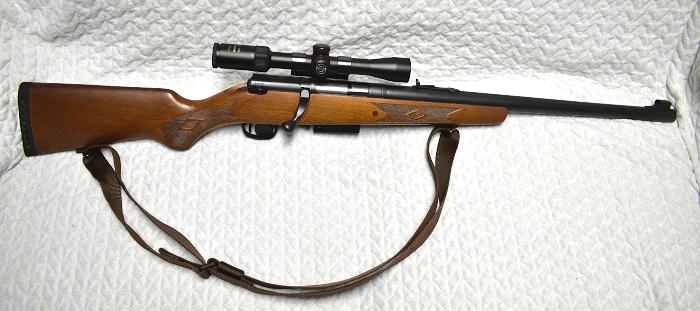As an Amazon Associate I earn from qualifying purchases. Amazon and the Amazon logo are trademarks of Amazon.com, Inc, or its affiliates.
Shotguns are one of the most versatile firearms on the market today and offer a level of flexibility not seen in any other type of firearm. For example, with the right shotgun load and shotgun choke configuration, a shotgun can be used for the following:
- Home defense
- Hunting large game (deer and bear)
- Hunting game birds (such as dove, quail, and pheasant)
- Hunting small game (such as rabbits and squirrels)
- Skeet, Trap, and Sporting Clays
When used for larger game species, it’s not uncommon for a hunter to mount a scope or optic on a shotgun to help with accuracy. Since a rifle scope can be mounted on a shotgun, one common question that I see being asked repeatedly is this one: can you use a rifle scope on a shotgun?
Before I jump right into answering that question, let me take a second to go over a few points that will help explain my answer.
Shotgun scope vs rifle scope
While there can be some crossover between shotgun scopes and rifle scopes, there are also some areas where a rifle scope is very different from a dedicated shotgun scope or optic.
Those differences can be loosely grouped into the following points:
- Power Magnification Range Differences
- Eye Relief Concerns
- Reduced Field of View
Let me dive a bit deeper into each of those topics and provide some context:
Power Magnification Range Differences
Most rifle scopes, except for fixed power models, feature an adjustable power magnification in a specific range of power magnification numbers. A scope’s power magnification is a numerical approach to quantifying the strength of the magnification when viewed through the scope. This magnification level is measured against what can be seen with the average naked eye.
For example, a scope with a 4x power has a magnification range that is four times what can be seen with the average naked eye. On the other hand, a variable powered scope with a 3x-9x power range would offer a magnification range of three times the naked eye up to a maximum of nine times the naked eye.
Traditional rifle scopes can have a power range that runs from a low end of 1x power up to as high as 60x power. Since shotguns have an effective range that is typically less than a center fire rifle, shotgun scopes do not require a high magnification power to be effective.
Most rifle scopes that are built for use on a shotgun feature a power magnification on the lower end of the scale, such as:
- 1x-4x
- 1.5x-4x
- 2x-7x
- 3x-9x
Rarely will a scope made for shotgun use feature a power range over 3x-9x.
Those are the primary differences between a shotgun scope and a rifle scope.
Eye Relief Concerns
Eye relief is a term used in the optical industry to describe the actual distance between the user’s eye and the ocular eyepiece of the optic. Eye relief is measured in inches and, ideally, is the measurement between the scope and the eye where the user sees a full and unobstructed view through the optic.
The amount of eye relief on a riflescope becomes more critical when we consider that shotguns can generate a substantial amount f recoil when fired. Therefore, if the scope eye relief is not sufficiently long enough, the scope may impact the shooter’s face due to recoil from the shotgun when fired.
When this impact on the shooter’s face occurs, it’s commonly called “scope bite” or “scope rash” and is dangerous and painful. To help avoid this type of injury, it’s essential to ensure that the riflescope has enough eye relief to prevent the impact.
Standard riflescopes have eye relief settings that vary from scope manufacturer to manufacturer. However, scopes made specifically for use on a shotgun (or muzzleloader) are manufactured with extended eye relief to avoid the scope bite issue.
Most centerfire rifle scopes have an eye relief in the 3″ to 4″ range, while most dedicated shotgun scopes feature an eye relief in the 4″ to 5″ range. At a minimum, most shotgun scope models feature an eye relief of 3.5″.
Mounting a standard riflescope on a shotgun can potentially lead to issues with short eye relief, but it really depends on the specific scope model and eye relief values.
For this reason, most hunters go with a dedicated shotgun scope versus a centerfire scope.
Reduced Field of View
Another potential area where shotgun rifle scopes differ from basic rifle scopes is the field of view area. Loosely defined, the field of view (which is commonly seen written as FOV) is the amount of view or area that the shooter can view when looking through the scope.
Field of view is measured in feet and uses the 100-yard mark as the distancing qualifier. So, if you’re looking at the specifications of a Vortex Optics Crossfire II scope in 2-7×32 power, you’ll see that the field of view is marked as “42-12.6 ft./100 yards”.
Translating these numbers means the following:
- With the scope on 2x power, the field of view seen through the scope at 100 yards is 42 feet.
- With the scope on 7x power, the field of view seen through the cope at 100 yards drops down to 12.6 feet.
Now, let’s compare those FOV numbers with the FOV data from a Vortex Crossfire II in 6-24×50. The FOV numbers for that scope are as follows:
- With the scope on 6x power, the field of view seen through the scope at 100 yards is 17.3 feet.
- With the scope on 24x power, the field of view seen through the scope at 100 yards drops down to 4.4 feet.
Looking at those numbers, you can see that the higher the scope magnification, the lower the field of view in the scope. So let me say that again as it’s important: As the scope magnification increases, the field of view decreases.
The field of view measurement is more critical in hunting situations versus target or bench shooting because game species may be more challenging to locate in the scope with a smaller field of view.
Lower powered scopes explicitly made for use on a shotgun feature a larger field of view compared to a higher-powered riflescope made for a centerfire caliber.
The larger field of view is another area where a shotgun scope differs from a typical riflescope.
Dedicated Shotgun Scopes
A dedicated shotgun scope is a model manufactured for, or specifically designed for, use on a shotgun. These shotgun-specific optics will be marked or labeled for use with a shotgun and may also feature a shotgun-specific scope reticle.
In some cases, scope brands also label this type of scope as being a muzzleloader or black powder scope since the specialized nature of muzzleloaders and/or black powder rifles overlaps with the specialized scope needs of a shotgun hunter.
Typically, these mission-specific types of riflescopes also feature extended or enhanced eye relief and are specifically built to withstand the repeated recoil of a shotgun.
If you’re in the market for a new shotgun scope, here’s a post that goes into greater detail discussing the best shotgun scopes for deer hunting.
Can You Use a Rifle Scope on a Shotgun?
For the most part, a standard rifle scope can work on a shotgun. However, the riflescope will need the necessary eye relief, lower power range, and field of view to be successfully used on a shotgun. Due to those more specialized needs, not every rifle scope on the market will meet those criteria.
Your best bet is to shop for a riflescope that is specifically designed for use on a shotgun or muzzle loader.
FAQS
Here are some frequently asked questions that I routinely see and hear being asked about shotgun scopes vs. rifle copes:
When should you use a rifle sight on a shotgun?
If the shooter or hunter is planning on using the shotgun to hunt larger game (such as deer) and will potentially be shooting at distances over 50 yards, then a rifle scope or red dot scope could be helpful from an accuracy standpoint.
The proper shotgun scope can extend the potential range of the shotgun with either shotgun slugs or buckshot. For example, if the hunter uses a shotgun with a rifled slug barrel combined with rifled shotgun slugs, a scope or optic can extend the potential shooting range out to 100 yards or farther.
Can you put a scope on a shotgun?
As long as the specific shotgun model is equipped for scope mounting, a scope or optic can potentially be mounted on that shotgun.
Shotguns that are not factory equipped for scope or optic mounting may require a specialized mounting system or a gunsmith to assist in the scope mounting.
I’ve been working in the firearms and sporting optics industry for over 20 years, with a personal and professional interest in all things related to rifle scopes, Through a combination of work experience, formal training, and personal experiences, I have extensive experience mounting, testing, and evaluating different rifle scope models across most major optical brands.




